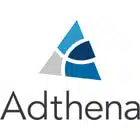Opinions expressed in this article are those of the sponsor. Search Engine Land neither confirms nor disputes any of the conclusions presented below.
Cookieless data isn’t the only concern in search marketing
Strategies to help you adapt to the new normal.

In response to a growing demand from consumers and regulators to protect online privacy, in January 2020, Google announced plans to phase out support for third-party cookies in its Chrome browser.
With all of the changes Google has been making over the past year, including its cookieless world, and as we begin to enter the new post-normal, marketers are looking to reinvent their search strategies — especially personalization. But where do you start?
This article will hopefully help alleviate the stress of how to adapt to the new normal and share other alternatives to personalization.
Expanding personalization alternatives
There’s more than one way to personalize digital experiences. For marketers with first-party data resources, on-site personalization provides an alternative to further engage existing customers without the need to rely on third-party cookies. While it may soon no longer be possible to target based on audience identity and behavior, leveraging tools like time- and- location-based messaging can help to provide a similar sense of user customization. Combining these tactics with contextual targeting will allow marketers to draw new customers to their site and serve them a personalized experience that’s totally cookieless.
- Leverage tools like time- and- location-based messaging: these help to provide a similar sense of user customization.
- Utilize Contextual Targeting
- Realign with accuracy of intent: rather than letting the cookie determine for you
- Understand which terms are most competitive at which time of day
The challenge of using audience data for customer acquisition
73% of marketers still say audience targeting is their most effective tactic even as the cookieless deadline approaches.
In Adthena’s most recent webinar with Search Engine Land, audience targeting was the biggest concern for marketers. Here are some tips on how to prepare for the cookieless future.

- Build first-party data
Without cookie-powered targeting and the option to easily remarket to prospective customers, brands will need to build up their supply of first-party data. Make sure your website is set up to collect the data you need — whether it’s emails, phone numbers, shopping history, or on-page behavior — so that you can continue to connect with your customers and reach them with messages and opportunities without cookie-based targeting.
- Leverage search intelligence
As we transition to a cookieless future, data is at a premium. With the elimination of cookies, Google will become even more of a walled garden. Leveraging search data and expertise can help you design PPC campaigns without becoming totally reliant on Google’s platform.
Resources: A guide to Paid Search in the Post-Cookie world; Why Google’s Cookieless Data Policy Isn’t The Only Concern in Search Marketing
Harnessing the power of Location Targeting
As states vary with COVID-19 regulations, local search & competitive ad messaging will be key for brands. In fact, 61% of marketers in a recent Forrester study said that improving the efficacy of their local marketing is a high priority for 2021.
Here are some tips to create a safety-net with Location Targeting:
- Don’t rely on Google Location Targeting alone
The data provided by Google Ads and others aren’t as granular as it needs to be in order to do things such as monitor competitor strategies or uncover opportunities that may crop up. This is something that advertisers and marketers need to keep in mind when gathering comprehensive search intelligence to make their strategies as dynamic as possible.
For advertisers, it’s nearly impossible to juggle national, state, and local demand manually or without the right data. Therefore, AI is a business imperative when it comes to succeeding in the local search market.
- Take the time to lay the groundwork
Local search advertising is moving at the speed of light, so it’s natural for advertisers to feel as if they need to jump in as quickly as possible and deal with any growing pains as they come. But in actuality, not having a game plan before jumping in can have far greater consequences.
Therefore, take the time to create a clear checklist of tentpole items that will build the ideal strategy for you. By identifying such items as current benchmarks, target search terms, ideal partners, and other foundational elements ahead of time, advertisers and marketers can build a much more effective strategy with far fewer gaps right from the outset.
- Know your business
Given each industry and each business’s KPIs will have at least some differentiation, it isn’t necessarily surprising that Adthena’s customer research has revealed that location targeting tactics vary drastically across industries, sub-industries, and even individual businesses. Don’t settle on some sort of one-size-fits-all approach to your search. Instead, get as granular as possible.
To truly get the most out of your local search strategy, advertisers and marketers need to focus on the specific behaviors of their customers and local competitors. Moreover, advertisers and marketers need to be able to adapt their creative and broader strategies in tandem to capitalize on any potential opportunities.
Resources: Covid is Changing Search. Here’s How to Respond
The importance of brand protection
Protecting your brand never stops. In paid search, your most effective and affordable strategy should be to leverage your brand. Your online brand space is where you should be most confident at securing transactional web traffic associated with your products or services.
Here are some tips on protecting your brand:
Monitor your brands
- Monitor brand terms to see what terms competitors & partners are bidding on.
- Defend your brand in the most cost-effective way by taking advantage of brand search term opportunities
- Capture infringements of your trademarks in search.
Manage partners and affiliates
- Analyze your partner and affiliate network to identify areas of improvement, from spend to share of voice.
- Utilize custom analysis, visualizations and reports, provided by a team of in-market experts, to uncover and address business-specific challenges.
- Use automated search intelligence technology to monitor and record evidence of violations so that you can enforce the rules easily.
Resources: PPC Brand Crashers Guide
Monitoring competition and trends
In an uncertain world, monitoring your market, competition & trends never stops. How can you stay on top of changes? Here are some tips on monitoring & reacting to changes in the market.
- Monitoring the market
Implementing data visualization and reporting tools will help you make agile assessments, spot patterns and know where to invest your money and energy. Daily clicks might be dropping on a campaign but a visualized trend line gives you that ‘aha’ moment on seasonality and popularity.
Analyzing which search terms are worth investing in is key to the success of your campaigns. For example, why spend your budget on search terms you rank first or even second organically in? Being able to quickly gather, visualize, and interpret the data will not only help you optimize your campaigns, but it will also remove that ‘dark data cloud’ and make your life easier.
- Keeping ad messaging fresh
You want Google’s Responsive Search Ads (RSAs) on your team. Don’t be a hero, use tools that help you cut corners, so you can start winning.
Implement RSAs across your campaigns, and create A/B testing on your smaller laser-focused AdGroups, to learn what works faster and get better campaign results.
When it comes to creating fresh content, look to your competitors for inspiration. You can emulate their messaging to win on a bidding strategy or completely pivot your content to stand out. Alternatively, you may decide to drop that bid and, like any good small forward on the basketball court, move to where you can win.
If you adopt best practices with your ad content and create impactful landing pages you can also increase your conversions and improve your on-page quality score.
Resources:
Find your PPC A-game,
A guide to Paid Search in the Post-Cookie world;
Why Google’s Cookieless Data Policy Isn’t The Only Concern in Search Marketing
If your questions still haven’t been answered, check out this guide, A guide to Paid Search in the Post-Cookie world, for more information on combating Cookieless.
Related stories
New on Search Engine Land
